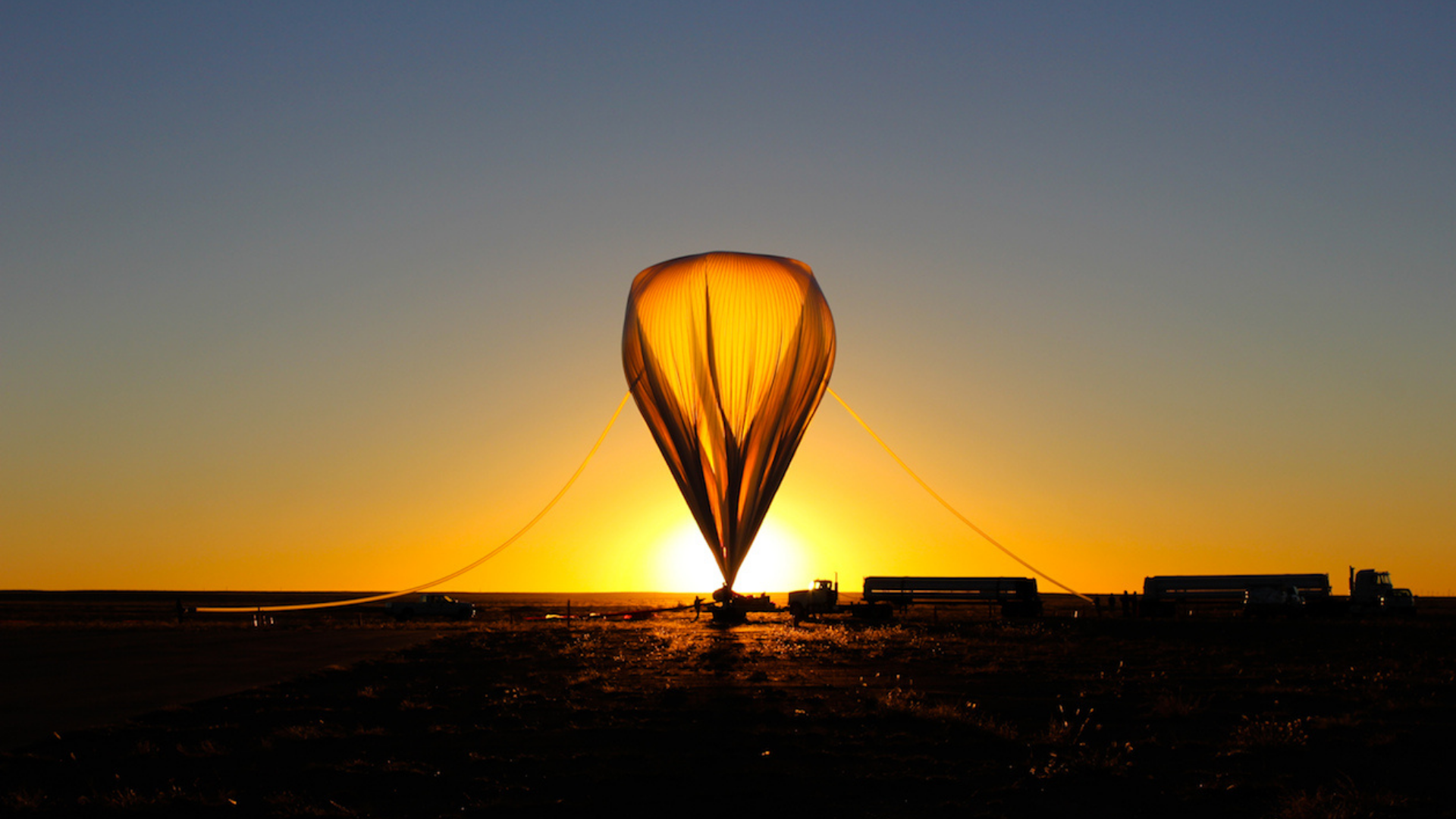CLARREO Pathfinder Benefits from a Breakthrough in Radiance Measurements

The sun rises in Fort Sumner, NM, as the HySICS payload is readied for launch. (Credit: NASA)
In August 2014, the HyperSpectral Imager for Climate Science (HySICS) instrument was carried aloft on a high-altitude balloon over New Mexico to make, at the time, the most accurate shortwave radiance measurements ever taken of Earth. During a nine-hour flight, HySICS took ultraviolet-to-solar radiance measurements of Earth, cross-calibrated by periodic measurements of the sun.
Outgoing radiance – the amount of sunlight reflected from Earth’s surface and atmosphere and back to space – is a key measurement for climate studies, and measuring radiance over time helps quantify environmental changes. NASA satellites have collected radiance measurements of Earth for decades, but technology advances for the HySICS instrument are leading to measurements with higher accuracy than those currently available to researchers.
HySICS, which was developed at the University of Colorado Laboratory for Atmospheric and Space Physics (LASP) with funding by the Instrument Incubator Program, has a spectral range of 350 to 2300 nm, covering most of the sun’s emitted energy. A single focal plane array spectrometer spans the entire wavelength range resulting in an instrument with reduced mass, volume, and power requirements.
The HySICS balloon test demonstrated radiometric accuracies of approximately 0.2%, nearly a 6x improvement over previous instruments. Such highly accurate, SI-traceable radiance measurements could enable faster detection of climate trends, on the scale of years instead of decades.
In 2016, the NASA Climate Absolute Radiance and Refractivity Observatory (CLARREO) Pathfinder mission team selected HySICS as its primary payload. When it is launched to the International Space Station, CLARREO Pathfinder will measure radiance from orbit with unprecedented accuracy and serve as a calibration reference for other satellite instruments.